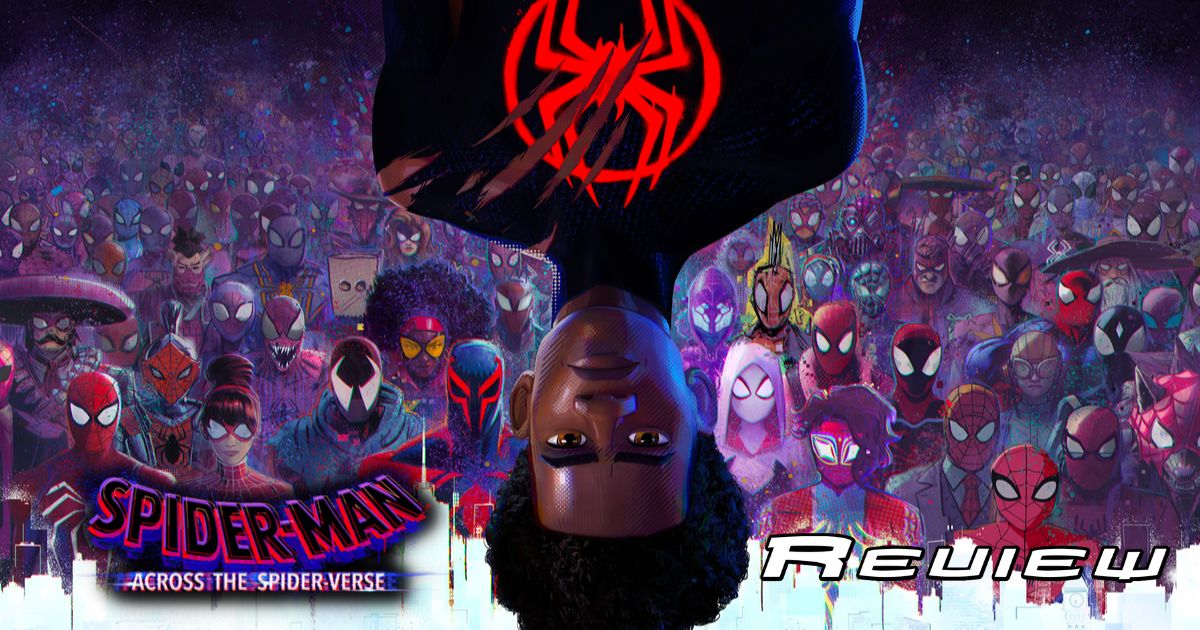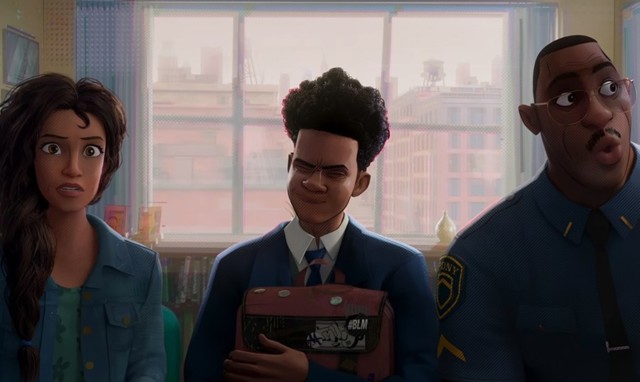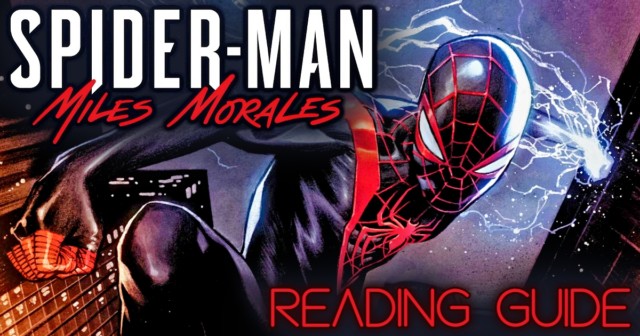Review: ‘Spider-Man Across the Spider-Verse’ is an Animated Masterwork

A great Spider-Man story feels like a tragic coming-of-age tale. In the DNA of the character, tragedy spawns a hero who feels compelled to take action. The franchise is riddled with famous tragedies such as Uncle Ben or the infamous death of Gwen Stacy (one of the most talked about deaths in comic history). Spider-Man: Across the Spider-Verse is undoubtedly a visually phenomenal film in animated storytelling, but deep within its eye-popping exterior are thoughts about subverting the narrative. Specifically, the narrative in our lives.
Instead of asking, “Why do we suffer?” A common question posed in Christopher Nolan’s Batman Begins. Spider-Man: Across the Spider-Verse instead asks, “Why must we suffer at all?” Why can’t we “break canon?”
[Warning: Light Spoilers and Impressions from Spider-Man: Across the Spider-Verse are below!]
Spider-Man: Across the Spider-Verse: The story
The sequel has two initial setups; the first is an extended prologue in the universe of Spider-Gwen (Hailee Steinfeld), detailing the path of her return to the home universe of Miles Morales (Shameik Moore). The extended sequence gives further complexity to Gwen’s character as we discover a troubling family dynamic in her story.
Once we are back in the world of Miles, the coming-of-age dynamics kick into gear. Miles is about to graduate high school, so he has to start planning his future.
His parents, voiced by Luna Lauren Velez and Brian Tyree Henry, are as infectious as ever. Rio and Jefferson want nothing but the best for Miles, though they grow frustrated by his inability to be on time or show up. Plus, Miles’ mother begins to suspect he has a secret. The written character motives behind Rio are both relatable and endearing. She doesn’t want her son to feel like he has to lie to her, no matter the truth.

Miles, however, has a growing problem. What appeared to be a straightforward villain named The Spot (Jason Schwartzman) has evolved into an existential threat to the multiverse. His spots find new power-like abilities that transcend time and space. Even worse, The Spot has an unyielding grudge against Spider-Man and wants to destroy everything he cherishes.
Viewers will find the villainous backstory behind The Spot hilarious. The character was the victim of one of the funniest and tiniest jokes from the first film; now, he is honored with the giant villain treatment in this movie.
The Baskin-Robbins of Spider-Man movies
Once we cross the threshold of the multiverse, the film embarks on a gleeful path of introducing Spider-Men of every sort. The versions include characters of every species and every culture. There is also a wheelchair-bound Spider character with a gadgety mobile device.
The frontrunner for best addition is Pavitr Prabhakar / Spider-Man India (Karan Soni), who steals the entire show for a period. Another standout is the Ramones-inspired Spidey known as Hobart “Hobie” Brown / Spider-Punk, voiced by Daniel Kaluuya. His animated exterior is executed like a concert venue flyer with many magazine cutouts.
And this is just the tip of the iceberg. The film is the Baskin Robbins of Spider-Man movies offering 31 flavors and then some. Every multiverse persona is wildly realized and offers franchise potential, and there are numerous characters introduced that could make incredible Spider-Man movies.
Jaw-dropping animation
Spider-Man: Across the Spider-Verse is an achievement in animation. Every frame is meaningful and rich with detail, and there is so much activity with each cut. If the film garners repeat viewings, it will be because moviegoers want to catch things they missed the first time around. For example, when we enter the world of Spider-Gwen, the animation has a watercolor aesthetic. As she talks with a character, the coloring runs down the walls (and it does so in a highly subtle fashion.)
Other moments see the multiverse characters cross-contaminate each other with their animation techniques. The approach is like a visually striking collage made of newspaper clippings, magazine bits, album covers, and artwork that all form an epic superhero story. Genuinely, Spider-Man: Across the Spider-Verse might be one of the best-produced animated films.
A Spider-Man story about breaking the canon
As stated at the front of this review, the sequel is a commentary on changing the narrative, which is a layered concept. In every universe, Spider-Man suffers to understand the phrase, “With great power comes great responsibility.” In Gwen’s world, every time Spider-Man gets close to her, the relationship pays for it.
The film dares the viewer to challenge this notion. Why must someone pay a price to prove how great they are? At the beginning of the movie, Miles’ counselor (Rachel Dratch) suggests he write his college essay a “struggling” story. Similarly, later in the film, an antagonist prevents Miles from saving someone he loves because he “can’t break the canon.”
The social commentary here is exceptionally thick. Does a minority have to have a “struggle” to be seen as significant? Another example, this writer has a disability. Is a disability a requirement for someone to be seen as “inspiring,” or can they be great without it? The film says, “Break the canon.” Being accepted should not come at a cost.
Spider-Man Across the Spider-Verse is an animated masterwork
There are nitpicks with the sequel. The one choice in movie making that can be bothersome is cliffhangers. Spider-Man Across the Spider-Verse ends abruptly (Similar to Fast X). The intention is meant to build excitement for Beyond the Spider-Verse (which it does succeed in this notion). Still, having the movie be a complete thought on its own would have benefited the experience.
This small gripe aside, Spider-Man: Across the Spider-Verse is a cinematic achievement in animation and storytelling. The hard work of the storytellers and animators is on the screen. Every frame of this movie could be a poster, screensaver, keepsake, etc. It’s simply masterful work.
As for all the other animated movies, the bar is now set. Spider-Man: Across the Spider-Verse will be the Best Animated Feature at the Oscars unless a new champ enters.
My rating for this film:
★★★★/ ♥♥♥♥
Spider-Man: Across the Spider-Verse arrives in theaters on June 2. Are you excited to watch the film? Let us know on Twitter or in The Cosmic Circus Discord. And if you haven’t already, check out our guide to Miles Morales and more under our Spider-Man: Across the Spider-Verse tag!
Spider-Man Miles Morales Comics Reading Guide
Spider-Man Across the Spiderverse Theory: Origin Story of The Spot




